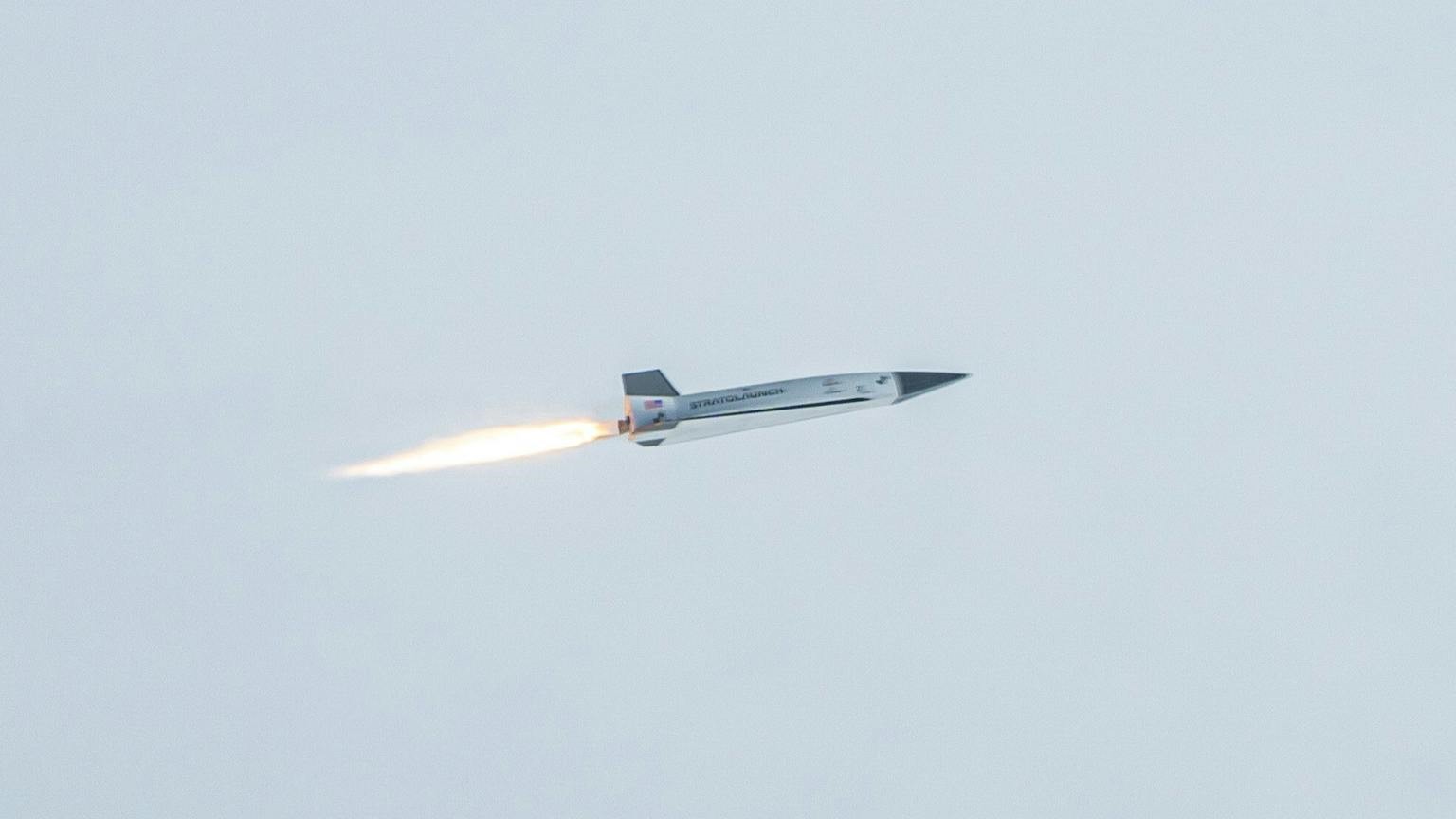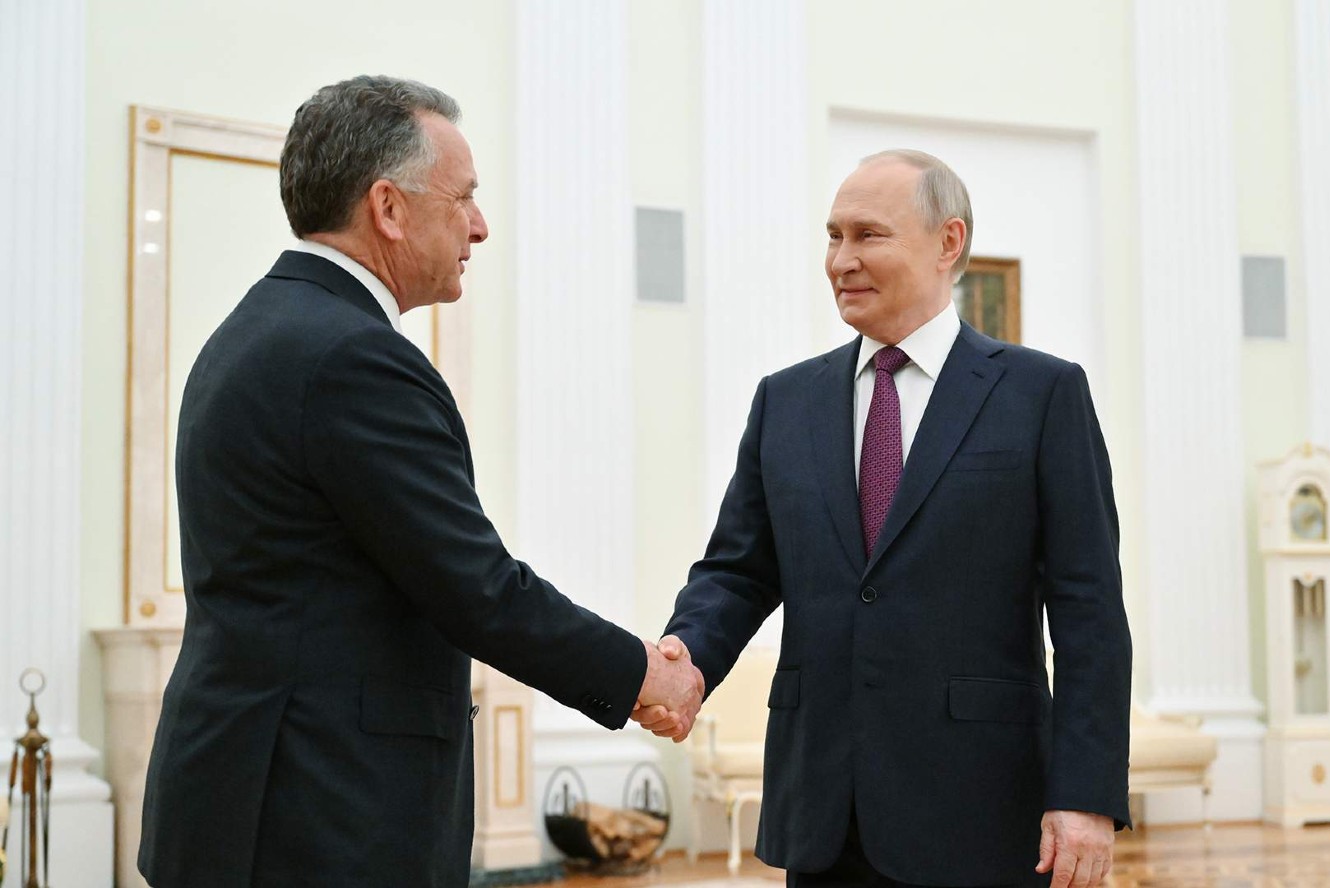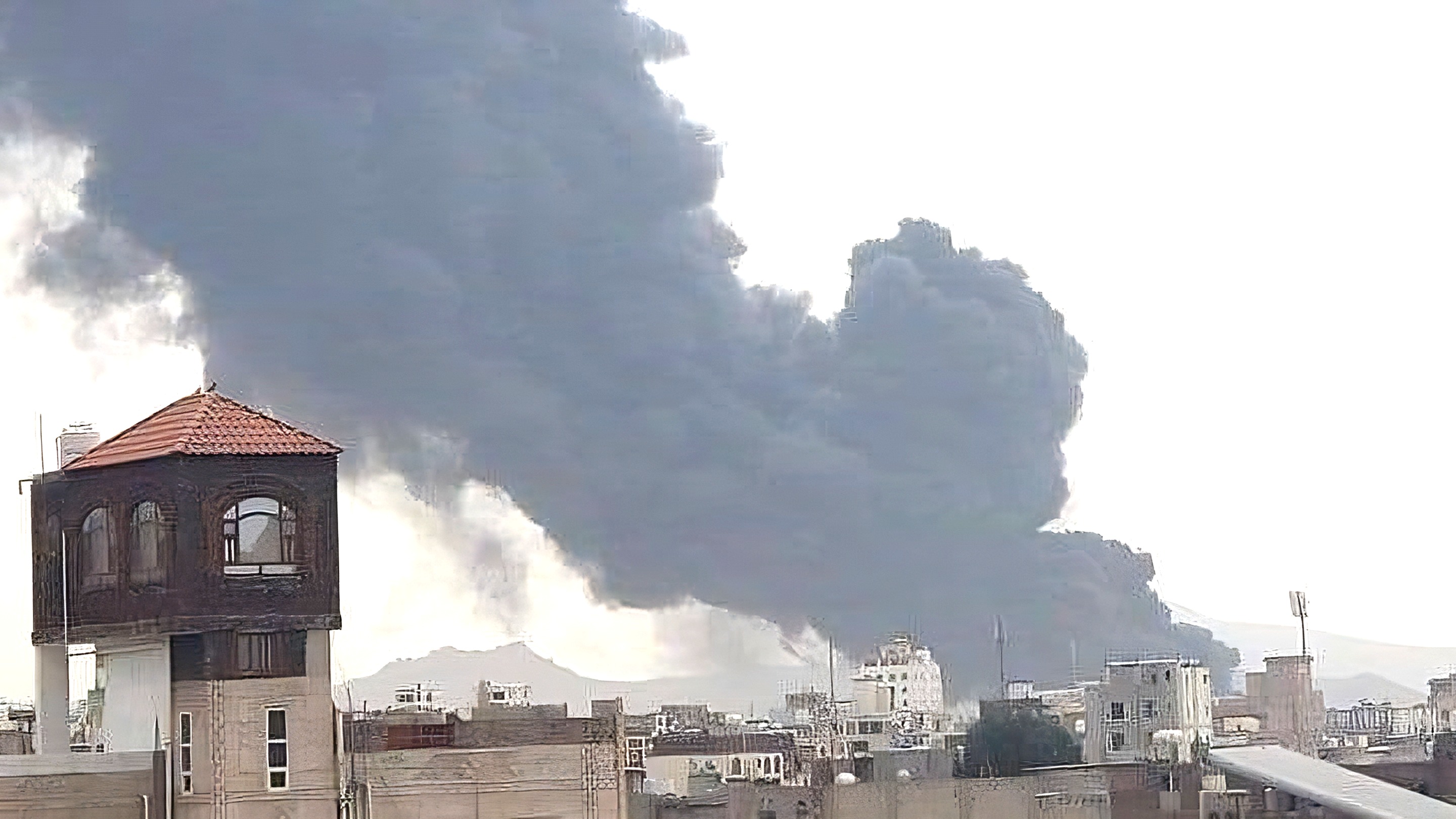The D Brief: 10% fewer generals; ‘Conquer Gaza’; New ICBM expense; ‘Airpower trap’?; And a bit more.
Hegseth orders elimination of 10% of general, admiral jobs. Defense Secretary Pete Hegseth took the first step to turn his rhetoric about bloated senior military ranks into policy on Monday with a memo ordering the services to eliminate at least 20 percent of active-duty four-star general and flag officer billets, at least 20 percent of all general officer jobs in the National Guard, and another 10% of general and flag officer billets across the entire military, Defense One’s Meghann Myers reported Monday. Hegseth’s order likely amounts to hundreds of positions being eliminated or reduced in rank, including more than 100 generals and admirals and their staffs. Hegseth announced the memo after donning makeup for a two-camera video the Pentagon produced and posted online Monday afternoon. Notable: His memo sets no deadline for the services to eliminate the jobs, nor does it direct the services to send him a list of proposed cuts. The Pentagon did not immediately return a request for a list of four-star general billets across the Defense Department’s five services. As of September 2023, there were 809 active-duty generals and admirals serving in the military, a few dozen below the legal limit of 857. That’s a much lower number than Cold War levels from the 1960s to the 1980s, according to a 2024 Congressional Research Service report, when the military was much larger. “However, while always very small in comparison to the total force, the GFO corps has increased as a percentage of the total force over the past five decades,” the report found. Read more, here. On Tuesday, Hegseth addressed an international group of special operations professionals at the SOF Week event in Tampa, Florida, Defense One’s Patrick Tucker reports on location. Hegseth lauded the SOF community as a model of innovation, one that the rest of the Defense Department should follow, especially in the context of rapid technological development in places like China and Russia. “I saw a report this morning on the plane here that demonstrated our enemies are adapting in a matter of hours, not in a matter of years, days, if we're lucky,” he said, without elaborating on the report. “You adopt advanced technologies early, you make them better, and then you help them spread to the rest of the joint force. You are willing to experiment and fail while learning from each failure and each success,” Hegseth said in his remarks Tuesday. Hegseth also touched on the broad international partnerships that U.S. special operations established with partner militaries, which the Pentagon chief said “pays huge dividends on our border in the Indo-Pacific and around the world.” He also hinted at an undefined role for U.S. special operations in Panama amid talk of “tak[ing] back the Panama Canal from Chinese influence,” which he called “a strategic prerogative” and “special operations plays a large role in it.” Hegseth, however, did not touch on the role that other government entities play in maintaining those partnerships, nor how they may be affected by diplomatic tensions caused by various White House moves pressuring the Panamanian and other governments. “Harnessing our partnerships gives us strategic and tactical advantage, achieving peace through strength,” Hegseth told his audience Tuesday. Additional reading: “Hegseth Used Multiple Signal Chats for Official Pentagon Business,” the Wall Street Journal reported Monday. ICYMI: The commander of U.S. Special Operations Command has concerns. “In a not-so-distant future, the United States may face a combination of National Defense Strategy competitors in a shooting war while still holding terrorist groups at bay and responding to yet more crises across the globe. It is not difficult to imagine a scenario in which things go badly, quickly.” But Army Gen. Bryan Fenton also has a vision for a broad partnership that could turn things around. Read about it in his op-ed for Defense One, here. Welcome to this Tuesday edition of The D Brief, a newsletter dedicated to developments affecting the future of U.S. national security, brought to you by Ben Watson, Bradley Peniston and Patrick Tucker. Share your tips and feedback here. And if you’re not already subscribed, you can do that here. On this day in 1937, the German airship Hindenburg caught fire and crashed while attempting to dock in New Jersey. More from the Pentagon New ICBMs likely can’t reuse old silos, Air Force now says. Ever since the program now called Sentinel began nearly a decade ago, the service has assumed that it could reuse the hundreds of silos that emplace the current Minuteman III missiles across the American West. “Shockingly enough, if we look at it [now], that may not be the answer,” Air Force Global Strike commander Gen. Thomas Bussiere said on April 30. The news arrives after the Air Force attempted to convert an old silo at Vandenberg Air Force Base in California. “While no decision has been made, we expect Sentinel to use p

Hegseth’s order likely amounts to hundreds of positions being eliminated or reduced in rank, including more than 100 generals and admirals and their staffs. Hegseth announced the memo after donning makeup for a two-camera video the Pentagon produced and posted online Monday afternoon.
Notable: His memo sets no deadline for the services to eliminate the jobs, nor does it direct the services to send him a list of proposed cuts. The Pentagon did not immediately return a request for a list of four-star general billets across the Defense Department’s five services.
As of September 2023, there were 809 active-duty generals and admirals serving in the military, a few dozen below the legal limit of 857. That’s a much lower number than Cold War levels from the 1960s to the 1980s, according to a 2024 Congressional Research Service report, when the military was much larger. “However, while always very small in comparison to the total force, the GFO corps has increased as a percentage of the total force over the past five decades,” the report found. Read more, here.
On Tuesday, Hegseth addressed an international group of special operations professionals at the SOF Week event in Tampa, Florida, Defense One’s Patrick Tucker reports on location. Hegseth lauded the SOF community as a model of innovation, one that the rest of the Defense Department should follow, especially in the context of rapid technological development in places like China and Russia.
“I saw a report this morning on the plane here that demonstrated our enemies are adapting in a matter of hours, not in a matter of years, days, if we're lucky,” he said, without elaborating on the report. “You adopt advanced technologies early, you make them better, and then you help them spread to the rest of the joint force. You are willing to experiment and fail while learning from each failure and each success,” Hegseth said in his remarks Tuesday.
Hegseth also touched on the broad international partnerships that U.S. special operations established with partner militaries, which the Pentagon chief said “pays huge dividends on our border in the Indo-Pacific and around the world.”
He also hinted at an undefined role for U.S. special operations in Panama amid talk of “tak[ing] back the Panama Canal from Chinese influence,” which he called “a strategic prerogative” and “special operations plays a large role in it.” Hegseth, however, did not touch on the role that other government entities play in maintaining those partnerships, nor how they may be affected by diplomatic tensions caused by various White House moves pressuring the Panamanian and other governments.
“Harnessing our partnerships gives us strategic and tactical advantage, achieving peace through strength,” Hegseth told his audience Tuesday.
Additional reading: “Hegseth Used Multiple Signal Chats for Official Pentagon Business,” the Wall Street Journal reported Monday.
ICYMI: The commander of U.S. Special Operations Command has concerns. “In a not-so-distant future, the United States may face a combination of National Defense Strategy competitors in a shooting war while still holding terrorist groups at bay and responding to yet more crises across the globe. It is not difficult to imagine a scenario in which things go badly, quickly.” But Army Gen. Bryan Fenton also has a vision for a broad partnership that could turn things around. Read about it in his op-ed for Defense One, here.
Welcome to this Tuesday edition of The D Brief, a newsletter dedicated to developments affecting the future of U.S. national security, brought to you by Ben Watson, Bradley Peniston and Patrick Tucker. Share your tips and feedback here. And if you’re not already subscribed, you can do that here. On this day in 1937, the German airship Hindenburg caught fire and crashed while attempting to dock in New Jersey.
More from the Pentagon
New ICBMs likely can’t reuse old silos, Air Force now says. Ever since the program now called Sentinel began nearly a decade ago, the service has assumed that it could reuse the hundreds of silos that emplace the current Minuteman III missiles across the American West. “Shockingly enough, if we look at it [now], that may not be the answer,” Air Force Global Strike commander Gen. Thomas Bussiere said on April 30.
The news arrives after the Air Force attempted to convert an old silo at Vandenberg Air Force Base in California. “While no decision has been made, we expect Sentinel to use predominantly [Air Force]-owned real estate to build new missile silos instead of re-using MMIII silos,” a service spokesperson said in a statement Monday. The service had no immediate word on how much expense that would add to a program that is already more than one-third over budget.
How did this happen? “I would say, at best it comes down to mismanagement and incompetence, and at worst, an intentional effort to downplay the complexities and challenges of the Sentinel program to make it appear like it would be the cheaper, easier option over just extending the service life of the current force,” said Mackenzie Knight, a senior research associate for the Nuclear Information Project at the Federation of American Scientists. Defense One’s Audrey Decker has more, here.
Additional reading:
- “Chilling effects: What one Army unit learned about cold-weather drone warfare,” Defense One’s Lauren C. Williams writes off a talk with a 10th Mountain Division brigade commander.
- “Wanted: counter-drone defenses that don't hurt surrounding neighborhoods”: DIU and the JCO are looking for better sensors and defenses that reduce collateral damage, Defense One’s Patrick Tucker reported Monday.
Israel-Gaza
Update: After 19 months of war, the Israeli military now says it wants to “conquer Gaza” and hold the Palestinian territory, the Times of Israel reported Monday. “The plan is gradual and focuses at first on a certain, unspecified area within the Strip, before expanding to other places” over a process expected to take several more months of fighting.
At least 59 hostages are believed to still be held in Gaza, “including at least 35 who have been confirmed dead,” the Times of Israel reports. “They were among 251 abducted on October 7, 2023, when Hamas led over 5,000 terrorists to invade southern Israel, killing 1,200 people and triggering the war.”
Israel’s military will also call up tens of thousands of reservists for the job, the Associated Press reports, while also cautioning that the plan “may be another measure by Israel to try to pressure Hamas into making concessions in ceasefire negotiations.”
ICYMI: “Israel cut off Gaza from all imports in early March, leading to dire shortages of food, medicine and other supplies. Israel says the goal is to pressure Hamas to free the remaining hostages,” AP reports. Meanwhile, “Aid organizations have warned that malnutrition and hunger are becoming increasingly prevalent in Gaza.”
Developing: Israel’s military attacked Yemen’s main airport in the capital city of Sana’a after warning citizens nearby to evacuate the area, the Israeli Defense Forces announced on social media.
Targeted: “Houthi terrorist infrastructure,” the IDF said, describing the strikes as a “response to the attack launched by the Houthi terrorist regime against Ben Gurion Airport” on Sunday.
According to the IDF, “The [Sana’a] airport served as a central hub for the Houthi terrorist regime to transfer weapons and operatives, clearly underscoring the Houthi terrorist regime’s brutal exploitation of civilian infrastructure. Furthermore, several central power plants were struck in, and surrounding, the Sana’a area. These plants were exploited by the Houthi regime for energy infrastructure and for the construction of underground tunnels.”
By the way: The Houthis managed to slip a missile through Israeli and U.S.-made air defense systems in that Sunday attack on Ben Gurion, the Times of Israel reported. Reuters and AP have more from the Israeli response Tuesday.
Another thing: The U.S. military “likely bombed a migrant detention center in Yemen on April 28,” the New York Times reported over the weekend after analyzing post-strike footage. “At least three U.S.-made GBU-39 bombs” were discovered “at the site of the attack, which killed 68 African migrants, according to the Houthis.” More, here.
Commentary: In Yemen, Trump risks falling into an “airpower trap.” The administration’s ongoing attempt to “completely annihilate” the Houthis through airpower is more likely to lead to an expanded war and even a quagmire, if history is any guide, writes Charles Walldorf of Wake Forest University. “U.S. presidents such as Lyndon Johnson, Bill Clinton, and Barack Obama all fell into this trap. In Vietnam, the Balkans and Syria, respectively, all ended up with far bigger wars than they bargained for, with consequences for civilian casualties, international peace, and damage to America’s reputation abroad,” Walldorf writes, here.
Trump 2.0
Are there legal limits to the U.S. military’s border activities? Thousands of active-duty troops are now performing missions along the Mexican border that go far beyond the usual support for the Border Patrol, NPR notes: “Among the most significant developments came last month, when Trump designated a 170-mile stretch of federal land along the southern border — which spans through California, Arizona, and New Mexico — as a military installation, or a national defense area. On Thursday, the Department of Defense announced that a second section in Texas will be marked as a military installation. At least 82 people have been federally charged for ‘unauthorized entry’ into the newly created National Defense Area in New Mexico as a result.”
NPR explores how these and other actions comport with federal laws designed to limit the use of federal troops on American soil. Read that, here.
Additional reading:
- Trump’s first Vice President Mike “Pence rebuffs Trump on tariffs, Russia and January 6 pardons in CNN interview,” CNN reported Monday;
- “Mike Pence awarded JFK Profile in Courage award for certifying 2020 presidential election on Jan. 6,” the Boston Globe reported Sunday;
- “US intel memo undercuts Trump claims about Venezuelan gang,” Politico reported Monday;
- “Judge orders Trump administration to admit roughly 12,000 refugees,” the Associated Press reported Monday;
- And “Internal VA Emails Reveal How Trump Cuts Jeopardize Veterans’ Care, Including To ‘Life-Saving Cancer Trials’,” ProPublica reported Tuesday.
Etc.
Lastly today, a hearty congratulations to Edda Fields-Black of Carnegie Mellon University for her epic 2024 book, Combee: Harriet Tubman, the Combahee River Raid, and Black Freedom During the Civil War, which received the Pulitzer Prize for History on Monday.
The book is a detailed account of a daring U.S. Army operation led by Tubman in 1863 that took three gunboats up South Carolina’s shallow Combahee River to free more than 700 enslaved people working on rice plantations in Confederate territory. Four years ago, Fields-Black spoke to us about her then-developing book on our Defense One Radio podcast. Read more at the Pulitzer website, here. ]]>






















































































































































